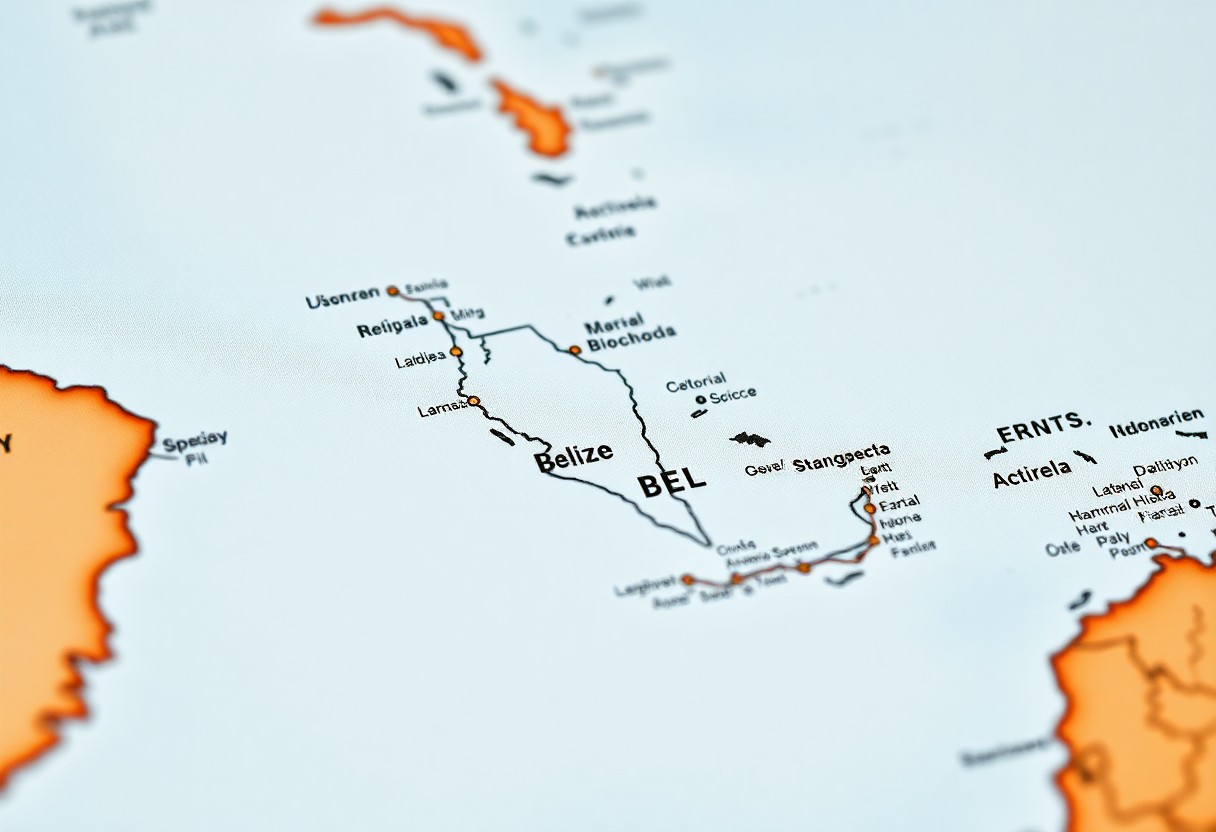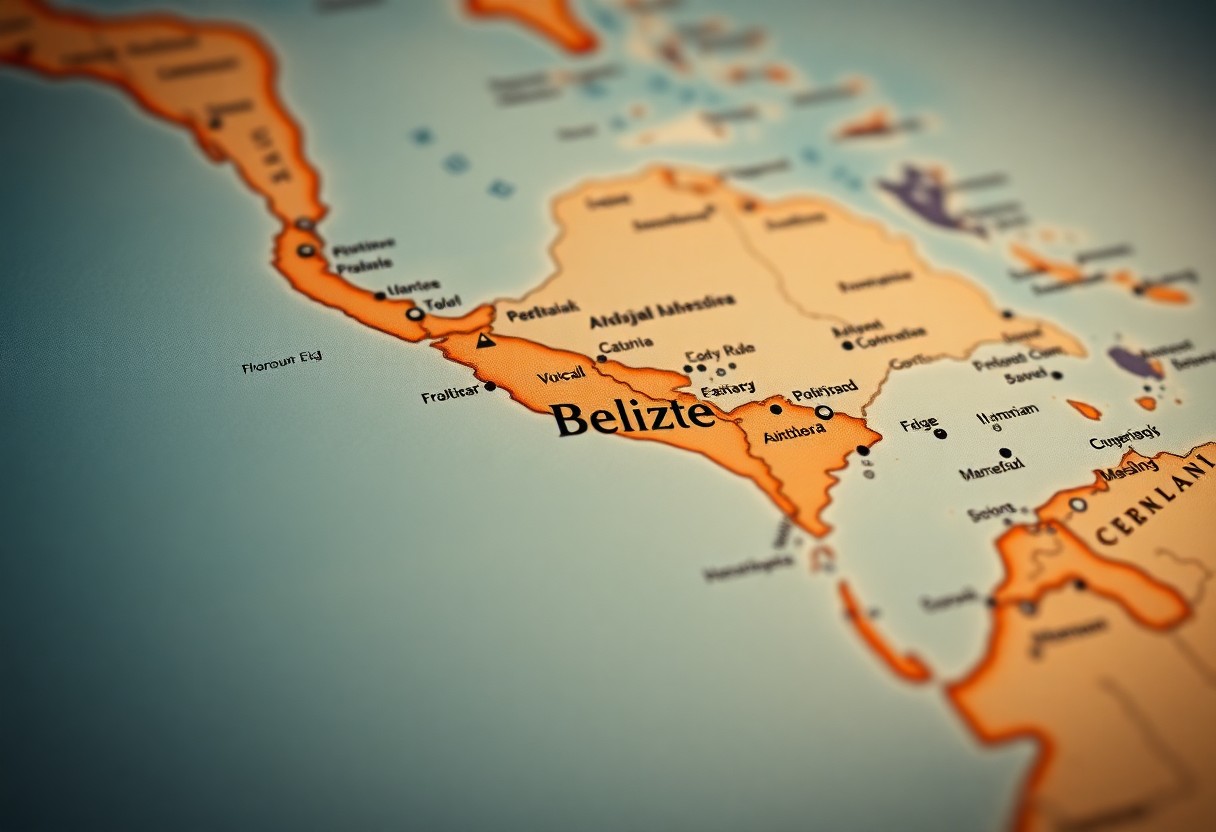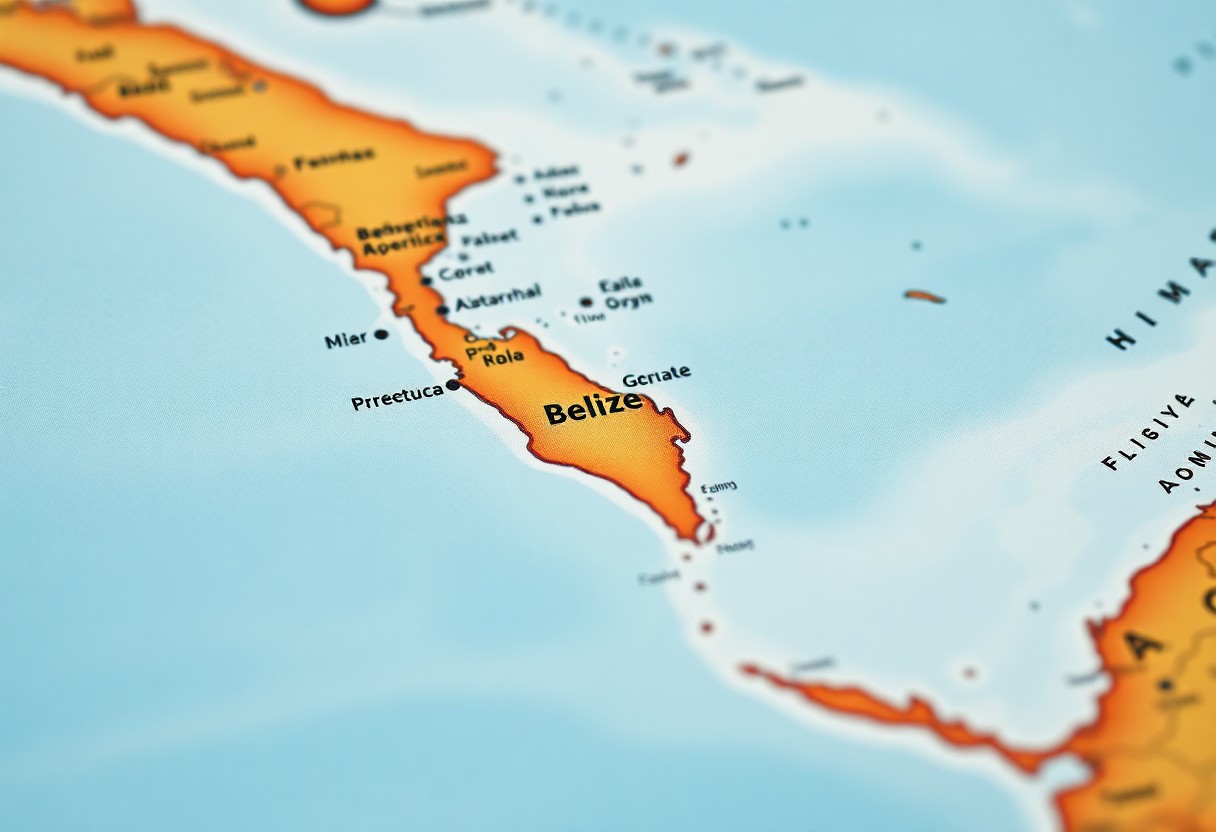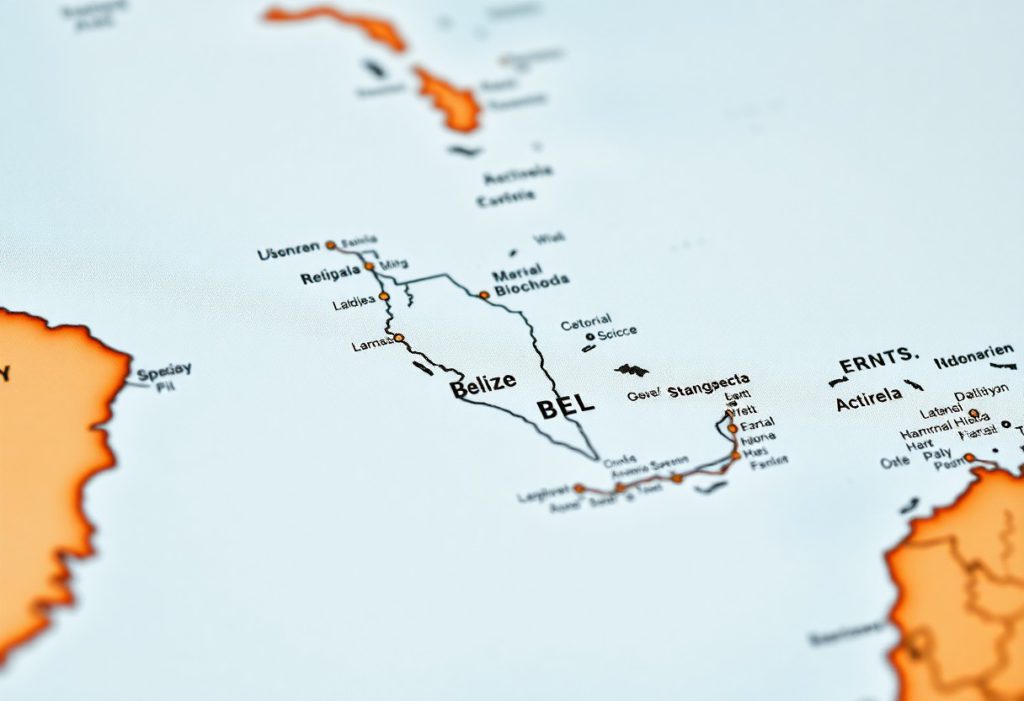The question of where Belize is located often intrigues many people. While some might assume it belongs to a specific continent, the reality is far more complex. Belize is nestled in Central America, yet it technically lies on the North American continent, strategically positioned between Mexico to the north and Guatemala to the west and south. This vibrant tropical nation also borders the Caribbean Sea, creating a unique blend of geographical and cultural richness that sets it apart from typical continental expectations. Understanding the global position of Belize deepens appreciation for its strategic and captivating location in the world.
 Here’s the text for your blog post:
Here’s the text for your blog post:
Discovering the Unique Geographic Location of Belize
The geographic placement of Belize may come as a surprise to many, as it is technically positioned in North America but is often associated with Central America due to its unique cultural and regional traits. This small yet significant nation resides in a distinct segment of the continent, merging Caribbean and Latin American influences that make its location exceptionally noteworthy. This cultural fusion not only enhances the nation’s appeal but also plays an essential role in shaping its identity, offering visitors a rich tapestry of experiences that reflect its diverse heritage.
Exploring Belize’s Strategic Geographic Position
Situated above the equator on the eastern coast of Central America, Belize boasts a strategic location nestled between Mexico to the north and Guatemala to the west and south. Covering an area of approximately 22,970 square kilometers, Belize claims the title of the second smallest country in Central America, featuring a stunning coastline that gracefully stretches along the Caribbean Sea. This geographical expanse presents a multitude of landscapes and ecosystems, enriching the nation’s natural heritage and contributing to its global significance.
Understanding Border Dynamics with Neighboring Countries
The borders of Belize are defined by its neighboring nations, with Mexico outlining its northern edge and Guatemala framing its western and southern perimeters. These borders extend for approximately 250 kilometers with Mexico and around 266 kilometers with Guatemala. The intricate connections between Belize and these neighboring countries weave a rich tapestry of historical and cultural interactions. The border areas are often populated by diverse ethnic communities, where shared histories and cultural exchanges have thrived despite past tensions, creating a vibrant atmosphere of multiculturalism in Belize.
Today, these border regions serve as lively zones of cultural exchange and economic interaction, showcasing the rich multiculturalism that Belize encompasses, ultimately enhancing its charm and appeal to visitors.
Uncovering Belize’s Profound Caribbean Connections
Diving into Belize’s geographical and cultural landscape reveals its deep-rooted ties to the Caribbean region. Although it is geographically positioned in Central America, Belize boasts strong cultural, historical, and linguistic connections with its Caribbean neighbors. The country’s British colonial heritage, combined with its English-speaking populace, aligns it more closely with Caribbean nations than with its Central American counterparts, further enriching its cultural identity and making it a fascinating destination for travelers.
Embracing a Coastal Identity and Vibrant Marine Life
To truly appreciate Belize’s Caribbean essence, one must explore its breathtaking coastline along the Caribbean Sea. As you traverse this picturesque area, you will encounter vibrant marine ecosystems, stunning coral reefs, and a maritime culture that embodies the Caribbean lifestyle. The coastal regions of Belize are a remarkable fusion of natural beauty and cultural diversity, showcasing the essence of what it truly means to possess a Caribbean character, making it a must-visit for nature and culture enthusiasts alike.
Belize’s Active Role in CARICOM
At the heart of Belize’s Caribbean connections lies its membership in the Caribbean Community (CARICOM). This strategic alliance not only opens doors to economic, diplomatic, and cultural opportunities but also reinforces Belize’s regional identity and collaborative potential within the Caribbean. Belize’s active participation in CARICOM transcends mere membership; it symbolizes a commitment to regional integration that fosters significant advantages for the nation.
This regional collaboration empowers Belize to engage in trade negotiations, secure diplomatic support, and promote cultural exchanges. By harnessing collective strengths, Belize enhances its international standing and elevates its contributions to Caribbean nations, thereby creating a robust platform for mutual growth and development that benefits all involved.
Addressing Common Misunderstandings About Belize’s Geography
There exists a prevalent misconception regarding Belize’s geographic classification that can perplex even seasoned travelers. One might wonder how this small nation fits into the broader continental landscape, particularly given its unique positioning at the crossroads of Central America and the Caribbean region.
Clarifying Geographic Misconceptions Surrounding Belize
A common misunderstanding is the assumption that Belize fits neatly into a single geographic category. Its complex location defies traditional continental boundaries, as it occupies a fascinating crossroads that challenges simplistic categorization. Gaining insight into Belize’s geographic position reveals a richer narrative than many initially perceive, highlighting its role as a unique meeting point of cultures and histories.
Understanding Belize’s Distinct Cultural Identity
Given its proximity to Mexico and Guatemala, one might easily conflate Belize’s geographic identity with that of its neighbors. However, the country’s unique cultural and linguistic characteristics, as highlighted in various aspects, distinctly differentiate it within the Central American landscape. Belize is not merely a geographical anomaly; its strategic position serves as a bridge between North and Central America, presenting a fascinating study of geographic complexity and cultural richness.
Belize’s location significantly impacts its culture, history, and international relationships, creating a rich tapestry of geographic and cultural significance that transcends simple continental classification and enhances its allure to visitors and researchers alike.

Exploring Travel Opportunities from Belize’s Unique Location
Contrary to many travelers’ assumptions, Belize’s unique geographical position unlocks extraordinary travel opportunities across various regions. Its location at the intersection of North and Central America offers diverse and easily accessible travel experiences. This positioning facilitates seamless exploration of neighboring countries, providing a gateway to both Caribbean and Central American cultures, thereby enriching any travel itinerary with multifaceted experiences.
Convenient Accessibility for Travelers from North America
Situated just south of the United States, Belize presents convenient and relatively short travel distances for those journeying from North America. You can expect direct flights from major cities, typically ranging between 2-4 hours, making it an attractive tropical getaway. Depending on your departure city, particularly from southern U.S. locations, you may discover even more expedited routes to this stunning destination, ensuring that your travel to Belize is both simple and enjoyable.
Exploring a Variety of Travel Options: Flights and Cruises
Among the most popular methods to reach Belize are international flights and cruise ship arrivals. Numerous airlines provide direct routes from major North American hubs, including well-known carriers such as United, American, and Delta, ensuring regular connections to Belize City’s Philip S. W. Goldson International Airport. This variety of options caters to diverse travel preferences, making it easier for travelers to choose what suits them best.
Moreover, your travel choices extend beyond traditional flights. Cruise ships frequently dock at Belize City’s port, offering an alternative maritime route to experience the country. Various cruise lines include Belize in their itineraries, granting travelers the opportunity to explore coastal regions and partake in organized shore excursions. These cruises provide a captivating glimpse into Belize’s breathtaking Caribbean coastline and its rich cultural diversity, making them an appealing option for travelers seeking a leisurely and enriching travel experience.
Here’s the text for your blog post sections:
Diving into Belize’s Rich Cultural Landscape
Belize showcases a captivating cultural landscape that resists simplistic categorization. You will find a rich tapestry of influences that blend Caribbean, Central American, and indigenous traditions into a unique national identity. The country’s multiethnic heritage distinctly defines its social fabric, with diverse groups such as Creole, Garifuna, Maya, and Mestizo populations contributing to its vibrant cultural mosaic, making Belize a fascinating case study in cultural diversity.
The Influence of Geography on Belize’s Cultural Development
Belize’s position at the intersection of the Caribbean Sea and the Central American mainland profoundly influences its cultural evolution. You will notice how coastal landscapes and tropical environments shape traditional practices, economic activities, and social interactions. The maritime traditions and adaptations to agriculture reflect the unique geographical positioning of Belize, showcasing the intricate relationship between geography and culture that enriches the nation.
Recognizing the Diverse Demographics and Cultural Heritage
One of Belize’s most striking features is its remarkably diverse population. You will discover that the population is composed of multiple ethnic groups, each contributing distinctive cultural elements to the national identity. The demographic composition mirrors historical migrations, colonial interactions, and indigenous roots, creating a complex cultural landscape that is both fascinating and instructive.
Additionally, Belize’s intricate social dynamics are noteworthy. Approximately 50% of the population is mestizo, complemented by substantial Creole, Maya, and Garifuna communities. Despite its small population of around 400,000, Belize represents an extraordinary blend of linguistic and cultural diversity. English serves as the official language, facilitating communication across various ethnic groups and fostering a unifying national identity that celebrates this diversity.
 Here’s the text for your blog post sections:
Here’s the text for your blog post sections:
Comprehensive Economic Overview of Belize
Belize’s economy reflects its unique geographical positioning in various ways. As a small nation with Caribbean coastlines, it boasts an economic structure that is both diverse and adaptable. The country harnesses its strategic location to develop sectors such as tourism, agriculture, and offshore services, establishing a resilient economic framework that harmonizes traditional industries with modern opportunities, contributing to sustainable growth.
Exploring Trade Relations and Economic Ties with Neighboring Countries
In the context of regional dynamics, Belize maintains essential trade connections with its neighboring countries. Strong economic ties with Mexico and Guatemala are facilitated by bilateral agreements, promoting cross-border commerce. Understanding these relationships is vital for grasping Belize’s economic interdependence and regional economic strategies, highlighting the importance of collaboration in fostering growth and development across the region.
Examining the Geographical Impact on Belize’s Industries
Belize’s geography significantly influences its industrial development. You will notice how coastal regions drive maritime industries, while inland areas support agriculture and forestry sectors. The diverse terrain provides unique economic opportunities that shape the nation’s productive capabilities and industrial landscape, creating a multifaceted economy that can adapt to various challenges.
The geographical diversity cultivates a complex economic environment. The coastal ecosystems support fishing and marine-related industries, while tropical forests sustain sustainable timber and agricultural production. Furthermore, the potential risks of climate change also influence industrial strategies, encouraging sectors to adopt more resilient and adaptive economic models, ensuring long-term sustainability and growth.
Here’s the paragraph:
Gaining Insights into Belize’s Unique Geographic Identity
Ultimately, it is fascinating to realize that Belize occupies a unique geographical position, situated in Central America, which is officially recognized as part of the North American continent. Understanding Belize’s global positioning reveals its strategic role as a bridge between the North and South American regions. As you explore this remarkable country, you will gain insight into its complex continental identity, positioned on the southeastern edge of the North American landmass and adjacent to the Caribbean Sea. This geographical nuance makes Belize a distinctive destination that defies simple continental categorization, offering an enriching blend of cultural and geographical diversity.
Here’s a detailed FAQ about Belize’s geographical position:
Frequently Asked Questions About Belize’s Geography
Q: Is Belize located in North America or Central America?
A: Belize is geographically located in Central America, which is technically part of North America. It is situated on the northeastern coast of Central America, sharing borders with Mexico to the north and Guatemala to the west and south. While some geographers consider Central America a distinct subcontinent, it is officially recognized as part of the North American continent, showcasing its unique geographical duality.
Q: What are Belize’s geographical coordinates and unique regional characteristics?
A: Belize is positioned between approximately 15.8° and 18.5° north latitude and 87.5° and 89.2° west longitude. The country boasts a diverse landscape that includes tropical rainforests, coastal plains, and a coastline along the Caribbean Sea. Its unique position situates it within the Central American region while maintaining distinct geographical and cultural characteristics that define its identity, making it a fascinating destination for exploration.
Q: How does Belize’s location influence its cultural and historical development?
A: Belize’s geographical position has profoundly shaped its cultural diversity and historical development. Serving as a bridge between North and South America, it has been influenced by the Mayan civilization, European colonization, and Caribbean elements. Its location has facilitated trade, migration, and cultural exchanges, resulting in a rich, multicultural society that embraces Creole, Garifuna, Maya, and mestizo populations, contributing to its dynamic cultural landscape.
The Article Which Continent Is Belize On? Understanding Its Global Position appeared first on Belize Travel Guide
The Article Belize’s Global Position: Which Continent Is It On? Was Found On https://limitsofstrategy.com



Your reflection on the geographic positioning of Belize certainly prompts a broader examination of how geography not only shapes nations but also influences cultural identity and societal development. It’s interesting to note how Belize, despite being geographically categorized as part of North America, is often culturally associated with Central America. This dual identity might lead one to ponder how geographical boundaries influence perceptions and interactions within the global context.
You’ve touched on an intriguing aspect of Belize’s identity. The way geography can shape a nation’s culture and identity is often more complex than mere maps suggest. Belize occupies this unique space where it’s part of North America on paper, yet culturally and historically, it aligns more closely with Central America. This duality not only reflects geographical realities but also speaks volumes about the ways people identify themselves.
You bring up a fascinating point about Belize’s geographic and cultural positioning. It’s intriguing how the lines we draw on maps can sometimes feel so arbitrary when it comes to identity. Belize’s blend of influences from the Caribbean, Central America, and even the UK due to its colonial past certainly makes for a rich cultural tapestry.
It’s fascinating how geography shapes not just landscapes but also culture and identity. Belize really is a great example of this; its location gives it a rich tapestry of influences from both North and Central America. When I visited a few years ago, I was struck by the unique blend of Caribbean, Latin American, and even some English influences in the food and music. It feels like a crossroads of cultures, which is so reflective of its geographical position.
I completely agree with you about how geography can influence so many aspects of life, including culture and identity. Belize is such a fascinating place for that reason. When I visited, I was also struck by how the various influences coalesce to create something unique. The blend of Caribbean rhythms with Latin American beats is unlike anything else, and you can really feel that in the local music.
You really hit the nail on the head regarding the unique blend of influences in Belize. It’s wild how a place so small can embody such a rich tapestry of cultures. The Caribbean vibes mixed with Latin American beats create a musical landscape that’s alive and pulsating. When I listen to local music from Belize, I can almost feel the stories and experiences of the people embedded in every rhythm and lyric.
It’s great to hear about your experience in Belize. The way geography shapes culture there is remarkable. The fusion of Caribbean and Latin American influences does create a sound that’s hard to replicate anywhere else. Have you noticed how the local music often reflects the daily lives of the people? It’s like you can hear the stories of the community woven into the rhythms and lyrics. Additionally, the diversity of its people contributes uniquely to that cultural tapestry. Did you get a chance to explore any local festivals while you were there? Those events are often where the music and culture truly come alive.
You’ve really captured the essence of what makes Belize so special. The way geography shapes culture and identity there is incredibly visible—it’s like every element reflects a rich tapestry of influences. The blend of Caribbean rhythms with Latin American beats has a depth that goes beyond just music; it embodies the spirit of the people and their history.
You really hit the nail on the head with your observation about Belize! It’s one of those places that feels like a living, breathing mosaic. The way geography influences not only the landscape but also the culture and identity is so evident there. It’s like you can taste that mix of influences in every meal, right?
You really nailed it with that description of Belize as a living mosaic. It’s fascinating how such a small country can hold so many layers of history, culture, and geography. The diverse influences definitely come through in the food—there’s this beautiful blend of Caribbean, Mayan, and even British touches that make each meal unique. I remember trying a traditional rice and beans dish prepared with coconut milk, and it felt like an experience more than just a meal.
It’s great to hear that you connected with the idea of Belize as a living mosaic. I love how you mentioned the layered influences on the food—it’s so true! That blend of Caribbean, Mayan, and British flavors really creates a culinary experience that’s hard to forget.
I’m glad you connected with that concept too; it really does capture the spirit of Belize. The way all those influences come together in the culinary scene is fascinating—it’s almost like each bite tells a story. I remember trying a dish that combined traditional Mayan ingredients with a Caribbean twist, and it was such a unique flavor experience.
It’s great to hear you connected with the culinary influences in Belize. The blend of Mayan, Caribbean, and even Hispanic flavors really creates something special. Each dish feels like a reflection of the country’s history and cultural diversity.
I love that you highlighted how the culinary scene in Belize is like a tapestry woven from so many different cultural threads. It’s true that each dish seems to carry a piece of history along with it. That blend of Mayan and Caribbean influences really showcases the region’s rich heritage and evolving identity.
You’ve hit on a fascinating point about Belize’s culinary scene being a tapestry of cultural influences. While we often celebrate the delicious fusion that comes from the blending of Mayan and Caribbean flavors, it’s important to remember that each dish carries its own story, often rooted in complex histories and traditions.
You really captured the essence of Belize’s culinary scene. The way the diverse influences come together is almost like a celebration of the country’s history and culture. I remember trying a dish called hudut there, which is a blend influenced by Garifuna traditions, and it was fascinating to see how the flavors tell a story of migration and community.
It’s really interesting how food can serve as such a vivid connection to a place’s culture and history. That blend of Caribbean, Mayan, and British influences in Belizean cuisine is a perfect example of how geography and history intersect. The rice and beans you mentioned, especially with coconut milk, really captures that fusion and offers a comforting but complex taste experience. It’s much like how the culture itself feels—a tapestry woven from various threads, each adding its unique flavor.
You really captured the essence of Belize so well. The idea of it being a living, breathing mosaic is such a vivid way to describe it. Each region has its own distinct flavor, both literally and culturally. I remember trying some traditional dishes there, like rice and beans paired with stewed chicken, and it was such a reflection of the diverse influences – the Creole, Garifuna, and Mayan cultures all seemed to dance on the plate.
You’ve hit on something really essential about Belize – the way different cultural influences come together to create a unique tapestry, both in food and in everyday life. Rice and beans with stewed chicken are such staple dishes, and they really showcase the blend of Creole, Garifuna, and Mayan culinary traditions. It’s refreshing to see how these influences are not just distinct entities but rather parts of a whole that continually evolve.
I appreciate your thoughts on Belize. It’s fascinating how food serves as a gateway to understanding the culture. The combination of Creole, Garifuna, and Mayan influences creates a unique culinary experience that goes beyond just flavors. Each dish tells a story, reflecting the history and traditions of these diverse communities.
You’ve nailed it with the way food encapsulates the essence of Belize’s culture. When you dig into a plate of rice and beans or fry jacks, you’re taking a bite out of history. Each dish reveals layers of the country’s past, shaped by the mingling of different communities.
You really nailed it with that observation about food being a gateway to understanding the culture. When you dig into Belizean dishes, it’s like pulling back layers of history and identity right on your plate. Take, for example, rice and beans—a staple in Belize—it’s a dish that reflects the blend of influences from Creole cooking with that Caribbean flair. There’s just something about the way it brings people together, whether at a family gathering or at a street stall.
You make a great point about how geography plays such a significant role in shaping both the landscape and the cultural identity of a place. Belize is indeed like this vibrant melting pot, where all those diverse influences come together, especially considering its historical background and location. When you’re standing on the coast and taking in the Caribbean vibes, it’s not just the stunning views that grab you—it’s the sound of Garifuna drumming or the aroma of Belizean rice and beans cooking that really pulls you into its cultural blend.
You’ve touched on something really beautiful about Belize. Standing by the coast, it’s almost like the elements around you come alive. The Garifuna drumming isn’t just music; it’s a heartbeat that connects people to their history, rhythmically guiding everyone through shared experiences. And that rice and beans? It’s more than a dish—it’s comfort wrapped up in flavors that tell stories of this land’s rich past.